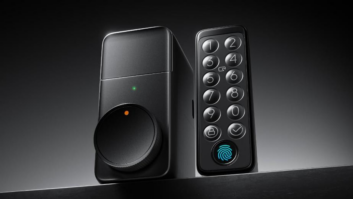The digital television transition is likely to take “a very long time” with or without the support of cable TV, announced Robert Sachs, National Cable Television Association (NCTA) president, at a recent Advanced Television Standards Committee (ATSC) event, here.
Countering recent statements from the National Association of Broadcasters (NAB), Sachs said: “It’s not as simple as saying that if every cable operator carries every broadcaster’s digital TV signal, we’d quickly attain [the 85 percent DTV penetration] goal. The fact is that more than half of the 32 million non-cable TV households in America would have to purchase integrated digital TVs or DTVs with set-top decoders in order to achieve 85 percent DTV penetration.”
He said that equates to 16 million DTVs that would have to be purchased by people who do not subscribe to cable TV.
Sachs also pointed to the 15 years it took for color television to reach comparable penetration levels as an indication of the huge task that confronts the digital transition.
Despite the hurdles, Sachs said the cable industry is embracing the DTV transition and HDTV in particular.
“When it comes to digital television, we believe that the availability of high-definition television will create the market incentive for more American consumers to purchase digital TV sets,” he said. “HDTV is key not only to the broadcasters’ digital TV transition, but to cable’s future growth.”
However, he added that the 200MHz of spectrum capacity cable operators created by converting their analog plants to digital “is not unlimited,” adding that cable operators are adding additional programming content, broadband Internet access, interactive services and video-on-demand applications in addition to HDTV cable and terrestrial broadcast content.
He said some of that new spectrum must be utilized to create additional revenue opportunities to help pay off the $1,000 per subscriber average investment cable operators are making in the upgrade.
Sachs pointed out that the cable industry was the first “to fully support” Federal Communications Commission chairman Michael Powell’s voluntary transition plan, and repeated pledges recently made by 10 multi-system operators including AT&T Broadband, AOL-Time Warner, Comcast, Charter Communications, Cox Communi-cations, Adelphia Communications, Cablevision Systems, Mediacom Communications, Insight Communi-cations, and CableOne.
He said the companies have committed to the following:
- By Jan. 1, 2003, all will offer to carry up to five commercial or public TV stations, or cable networks, that provide HDTV programming during at least 50 percent of their prime-time schedule or a substantial portion of their broadcast week.
- Operators may also carry other value-added DTV programming.
- Operators will begin immediately to place orders for integrated HD set-top boxes with digital connectors and provide these boxes to customers who request them.
- And, consistent with the cable industry’s October 2001 initiative to promote the retail availability of set-top boxes, operators will support consumers’ purchase of HD set-tops from consumer electronics retailers.
- Cable operators will also advertise and market HDTV and other “value-added DTV programming” using a broad variety of promotional tools.
Sachs took issue with the Consumer Electronics Association’s (CEA) charge that the cable industry is not working on platforms that will be compatible and interoperable with DTV sets, monitors and set-top devices.
“The cable industry is desirous of encouraging competing manufacturers to build interoperable digital consumer devices including integrated TVs because integrated DTVs will provide a further convenience to our customers,” he said. “To this end, CableLabs has published hardware and software specifications which consumer electronics companies can use to manufacture integrated DTV receivers. These integrated DTV sets will be interoperable with different cable systems and upgradeable through software downloads.
“CE manufacturers take issue with some provisions of CableLabs manufacturing license that require inclusion of certain digital copy protection technology,” he continued. “However, the blueprint is in place for any manufacturer who desires to build an integrated DTV receiver to do so today.”













